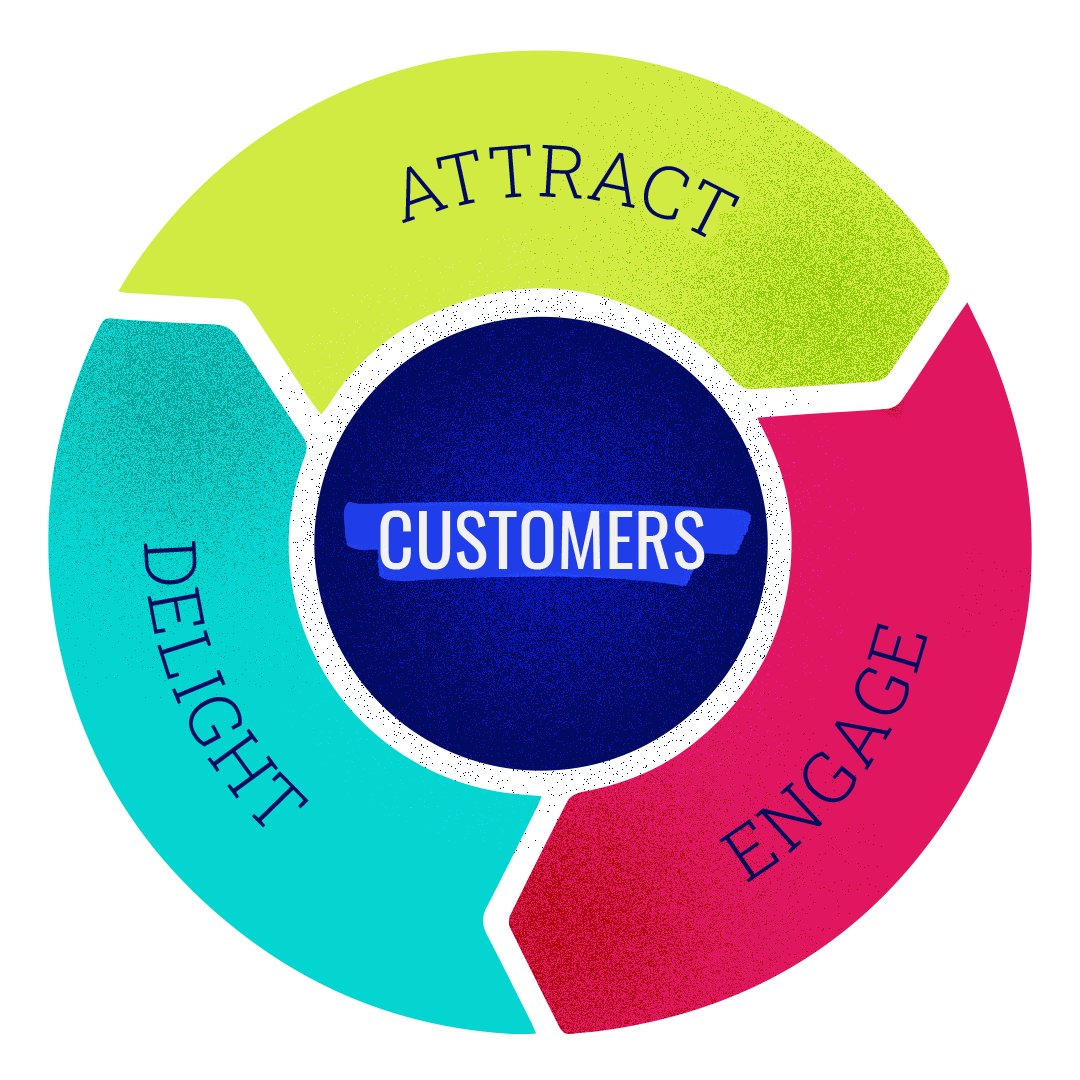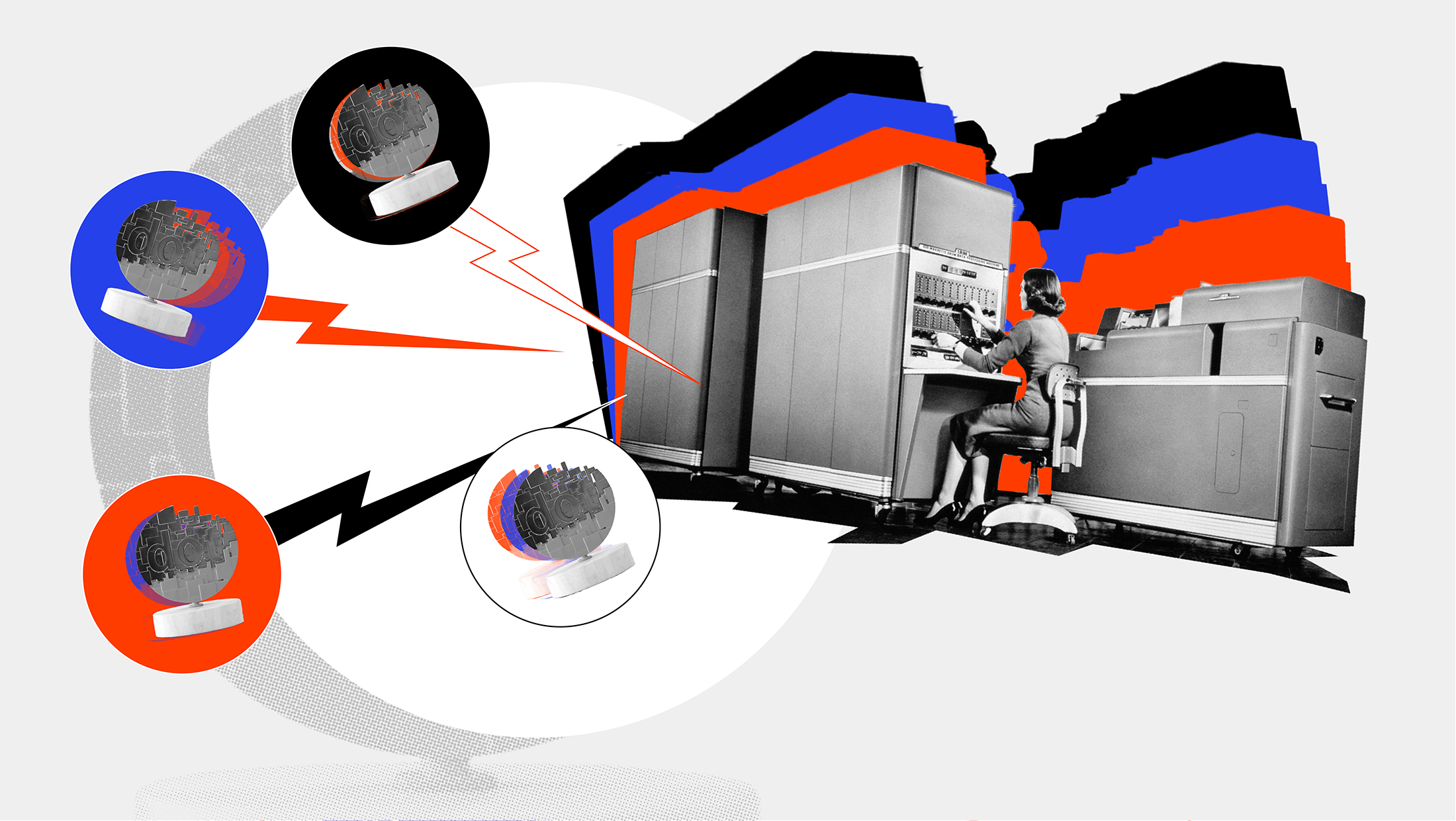How can we help you?
Most agencies chase noise. We build brands that last.
By balancing reach with resonance, we create desire at scale. The result is work that performs because it connects.
Give us a shout by filling out the form.
You can expect a response within two business days.
What are you looking for?
The best marketers create connections
You know the feeling…
You’re reading an article on Forbes.com when an auto-playing video pops up and you can’t find the X button fast enough.
You’re browsing TVs in-store when that dude in a blue shirt comes over and starts explaining OLED displays.
You open an email titled “RE: following up from before” only to realize there was no previous email exchange.
No one wants to be talked at. No one wants to be sold to. And no one wants to be tricked. These old sales and marketing tactics have no place in the connection economy.
What is the connection economy, anyway?
In the last few decades, the power has shifted from brands to consumers, creating the connection economy.
Companies that had already established connections with their customers grew strong, while industries and brands that didn’t put people first saw their world turned upside down.
Seth Godin first coined the connection economy and explains that it is built upon these four main pillars:
- Coordination. Efficient communication and execution between people and teams is critical to get anything done that’s worth a damn.
- Trust. Something that is built and earned over time by being authentic, transparent, and real.
- Permission. No one should ask, “How did you get my email address?”
- Exchange of ideas. Share your secret sauce, don’t keep it locked up in a vault.
Watching linear TV with crummy ads, checking your wallet for cash for a sketchy taxi driver, and paying for a cookie-cutter hotel experience simply aren’t customer-first. They all benefit the brand and not the user.
Humans are wired to connect with each other, yet business has run counter to this for too long.
It’s time to join the connection economy.
Connections don’t end (aka reexamining the marketing funnel)
The marketing funnel is a transaction.
If brands invest in awareness, interest, and decision stages, they get a certain number of paying customers! It puts the product and company at the center (or bottom) of the funnel, and the buyer is the replaceable item that either makes a purchase or drops out. The key factor is that there is an endpoint.

But a connection shouldn’t have an endpoint. Strong connections are built to last.
The rise of the marketing flywheel model over the past 10 years runs counter to the traditional marketing funnel by placing the customer at the center.
In the flywheel model, the path to purchase (attract) is only a small part; consulting and onboarding (engage) and quality service (delight) are just as critical.
The best marketing is word of mouth. Creating deep connections by engaging and delighting customers leads to more customers as referrals and strong word-of-mouth momentum picks up for a brand.
Let’s connect with prospects and customers instead of treating them as replaceable fodder for an old-fashioned funnel.
The best marketers connect disparate ideas
Compared to my peers, I got a late start in marketing. After college I worked in fast food, played in bands, taught English in Korea, and served as a river raft guide before beginning my “real” career in marketing.
At first I was somewhat regretful and embarrassed about my meandering post-college years, but now I realize it works to my advantage. Let me explain.
The best marketers are those who think outside the box and draw upon their different experiences and fields to create something truly original. In the Steve Jobs biography, writer Walter Isaacson spends an inordinate amount of time on the Apple founder’s ancillary hobbies and interests. Jobs’ calligraphy classes, Zen Buddhism practice, interest in architecture, and yes, experimentation with LSD would go on to inform his decision-making and creativity around product creation and marketing.
Modern marketing sits at the intersection of multiple fields. Its best practitioners are experts at synthesizing concepts of science and art.
Take the following tactics and fields, mix them with creativity and strategy, and you have modern digital marketing:
- Analytics
- Design
- Testing
- Art
- Video
- Experiments
- Technology
Steve Jobs mastered this concept with his uncanny ability to marry innovative technology with simplicity and beauty. He wasn’t first to come up with the laptop, MP3 player, or tablet. What he did was update this technology with his experience in other fields to create the best versions of those products and their accompanying releases into the market.
Let’s see how another innovator in his field upended the industry by creating connections.
Creating connections like a BBQ pitmaster
Barbecue is a source of pride in Texas. The old pitmasters took this to the extreme by carefully guarding their secret BBQ sauce recipes and smoking techniques. This created rivalries and drama that simply wasn’t customer-first and limited their brand’s exposure.
Until Aaron Franklin came along.
Franklin Barbecue in Austin has people lined up around the corner every day as early as 5 a.m. all to get the famous ’cue.

What’s even crazier is that founder Aaron Franklin has publicly shared his recipe and process for making award-winning smoked meats. He believes in a world where there is more great BBQ and even helps people repeat and re-create his approach.
Franklin’s appearances on various food shows, a PBS documentary course, and a MasterClass explaining his techniques are a far cry from his mentors’ tendency to hoard trade secrets.
Despite having access to the recipe and technique from the master himself, people still flock to his BBQ pits. This exchange of ideas and generosity runs counter to the old method of a “secret sauce” and has elevated Franklin’s BBQ to legendary status.
Franklin disrupted the BBQ industry by revealing its archaic secrets and letting his customers behind the scenes. He innately used the principles of the connection economy to build stronger relationships with customers who will be Franklin die-hards for life.
Marketers need to be like Franklin.
Let’s connect
A company’s true strength is its ability to make and build connections.
The reality is that many brands have products and services similar to their competitors’. It’s how a brand thinks strategically, synthesizes, and ultimately connects these offerings to their customers’ unique challenges that sets them apart.
This concept can be as complex as building a marketing mix of products and services to help a brand achieve revenue goals, or it can be as simple as sending a thank you note to let that prospect know that you’re thinking of them.
Let’s create better and stronger connections, together.
The best marketers create connections
You know the feeling…
You’re reading an article on Forbes.com when an auto-playing video pops up and you can’t find the X button fast enough.
You’re browsing TVs in-store when that dude in a blue shirt comes over and starts explaining OLED displays.
You open an email titled “RE: following up from before” only to realize there was no previous email exchange.
No one wants to be talked at. No one wants to be sold to. And no one wants to be tricked. These old sales and marketing tactics have no place in the connection economy.
What is the connection economy, anyway?
In the last few decades, the power has shifted from brands to consumers, creating the connection economy.
Companies that had already established connections with their customers grew strong, while industries and brands that didn’t put people first saw their world turned upside down.
Seth Godin first coined the connection economy and explains that it is built upon these four main pillars:
- Coordination. Efficient communication and execution between people and teams is critical to get anything done that’s worth a damn.
- Trust. Something that is built and earned over time by being authentic, transparent, and real.
- Permission. No one should ask, “How did you get my email address?”
- Exchange of ideas. Share your secret sauce, don’t keep it locked up in a vault.
Watching linear TV with crummy ads, checking your wallet for cash for a sketchy taxi driver, and paying for a cookie-cutter hotel experience simply aren’t customer-first. They all benefit the brand and not the user.
Humans are wired to connect with each other, yet business has run counter to this for too long.
It’s time to join the connection economy.
Connections don’t end (aka reexamining the marketing funnel)
The marketing funnel is a transaction.
If brands invest in awareness, interest, and decision stages, they get a certain number of paying customers! It puts the product and company at the center (or bottom) of the funnel, and the buyer is the replaceable item that either makes a purchase or drops out. The key factor is that there is an endpoint.

But a connection shouldn’t have an endpoint. Strong connections are built to last.
The rise of the marketing flywheel model over the past 10 years runs counter to the traditional marketing funnel by placing the customer at the center.
In the flywheel model, the path to purchase (attract) is only a small part; consulting and onboarding (engage) and quality service (delight) are just as critical.
The best marketing is word of mouth. Creating deep connections by engaging and delighting customers leads to more customers as referrals and strong word-of-mouth momentum picks up for a brand.
Let’s connect with prospects and customers instead of treating them as replaceable fodder for an old-fashioned funnel.
The best marketers connect disparate ideas
Compared to my peers, I got a late start in marketing. After college I worked in fast food, played in bands, taught English in Korea, and served as a river raft guide before beginning my “real” career in marketing.
At first I was somewhat regretful and embarrassed about my meandering post-college years, but now I realize it works to my advantage. Let me explain.
The best marketers are those who think outside the box and draw upon their different experiences and fields to create something truly original. In the Steve Jobs biography, writer Walter Isaacson spends an inordinate amount of time on the Apple founder’s ancillary hobbies and interests. Jobs’ calligraphy classes, Zen Buddhism practice, interest in architecture, and yes, experimentation with LSD would go on to inform his decision-making and creativity around product creation and marketing.
Modern marketing sits at the intersection of multiple fields. Its best practitioners are experts at synthesizing concepts of science and art.
Take the following tactics and fields, mix them with creativity and strategy, and you have modern digital marketing:
- Analytics
- Design
- Testing
- Art
- Video
- Experiments
- Technology
Steve Jobs mastered this concept with his uncanny ability to marry innovative technology with simplicity and beauty. He wasn’t first to come up with the laptop, MP3 player, or tablet. What he did was update this technology with his experience in other fields to create the best versions of those products and their accompanying releases into the market.
Let’s see how another innovator in his field upended the industry by creating connections.
Creating connections like a BBQ pitmaster
Barbecue is a source of pride in Texas. The old pitmasters took this to the extreme by carefully guarding their secret BBQ sauce recipes and smoking techniques. This created rivalries and drama that simply wasn’t customer-first and limited their brand’s exposure.
Until Aaron Franklin came along.
Franklin Barbecue in Austin has people lined up around the corner every day as early as 5 a.m. all to get the famous ’cue.

What’s even crazier is that founder Aaron Franklin has publicly shared his recipe and process for making award-winning smoked meats. He believes in a world where there is more great BBQ and even helps people repeat and re-create his approach.
Franklin’s appearances on various food shows, a PBS documentary course, and a MasterClass explaining his techniques are a far cry from his mentors’ tendency to hoard trade secrets.
Despite having access to the recipe and technique from the master himself, people still flock to his BBQ pits. This exchange of ideas and generosity runs counter to the old method of a “secret sauce” and has elevated Franklin’s BBQ to legendary status.
Franklin disrupted the BBQ industry by revealing its archaic secrets and letting his customers behind the scenes. He innately used the principles of the connection economy to build stronger relationships with customers who will be Franklin die-hards for life.
Marketers need to be like Franklin.
Let’s connect
A company’s true strength is its ability to make and build connections.
The reality is that many brands have products and services similar to their competitors’. It’s how a brand thinks strategically, synthesizes, and ultimately connects these offerings to their customers’ unique challenges that sets them apart.
This concept can be as complex as building a marketing mix of products and services to help a brand achieve revenue goals, or it can be as simple as sending a thank you note to let that prospect know that you’re thinking of them.
Let’s create better and stronger connections, together.



